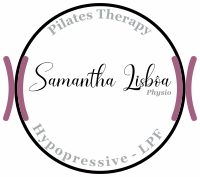Pilates and Low Pressure Fitness share a common goal, which can be broadly defined as regaining control of the body through awareness. They prioritise body alignment, breathing and postural fitness. Aligning the spine, engaging the core, inhaling and exhaling in a controlled manner are classic practices that we will find in both disciplines.
Low Pressure Fitness is a training program with an eclectic outlook, stemming in part from Yoga and developed a few decades after Pilates. The LPF is a postural and respiratory training combined with neuromyofascial mobilisation, neurodynamic exercises and the Hypopressive concept.
The Pilates method was developed in the 1920s, based on the concept called “Contrology” and this concept is nothing more than the conscious control of every movement performed by our body through muscles, tendons, ligaments and our entire structure.
The main differences between Pilates and Low Pressure Fitness :
Pilates exercises are usually done in a specific order, one after the other, and have “suggestive” names to identify them, such as “The Swan”, “The Scissors” or “The Rolling Like a Ball”. They look simple but require a lot of focus, precision and strength.
Pilates is also more dynamic than Low Pressure Fitness – Hypopressives.
LPF – Hypopressives is more static most of the time. The ‘LPF’ will also provide the added value of another type of concentration and centering, which is diaphragmatic expiration (abdominal vacuum), which activates the deep muscles of the abdomen and pelvic floor, the technique promotes a permanent focus on reducing pressure in the pelvic region and intra-abdominal.
The connection between Low Pressure Fitness and Pilates is obvious, as both aim to better manage intra-abdominal pressure. Among the common benefits of LPF e Pilates is increased flexibility, body awareness and balance of body and mind. Pilates will focus especially on voluntary contraction of the core muscles and bodywork to stretch and strengthen the whole body.
What is specific to the ‘LPF’ is the abdominal vacuum, which allows access to the myofascial core.
Pilates and LPF belongs to the category of exercises useful to balance myofascial tensions, re-educate posture and improve breathing. The exercises are also sequenced from simple to complex, focusing on core muscles, pelvic floor and breathing. The Low Pressure Fitness exercises include the same profile of people and the same attitude focused on Yoga and Pilates, but with a distinctive feature: permanent focus on decreasing pressure in the pelvic region.
Unlike traditional approaches to abdominal and pelvic floor exercises, Low Pressure Fitness works with a negative intra-abdominal pressure requiring the CORE to perform synergistically as a whole.








